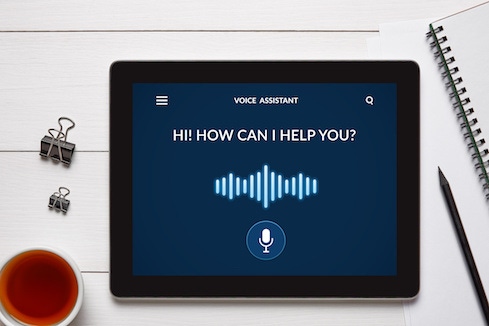Virtual employee assistants and voice interfaces to enterprise applications are relatively rare in enterprises today, but Gartner is predicting big growth in the next few years.

Is your IT infrastructure ready for voice interface chatbots? It's one thing to use digital assistants like Siri or Alexa at home or in your car. But is today's open office environment really ready for this kind of technology? According to a new prediction released by Gartner this month, this technology is coming to an office near you soon.
The market research firm is predicting that 25% of digital workers will use virtual employee assistants on a daily basis by 2021. That's compared to Gartner's prediction of less than 2% in 2019 -- a pretty steep increase for just two years, but it's being driven by several different technologies.
Contact centers served as the testing ground for early adoption of virtual assistants and chatbots. Even if they weren't used directly for customer contact, call center workers could use virtual assistants or chatbots to more quickly access the information they needed to serve the customers. Companies also used chatbots internally to help employees navigate internal systems such as human resources. That's what Liberty Mutual did recently with its own chatbot project, which grew out of ideas that its tech workers had brought back from hackathons. Advanced technologies such as machine learning, natural language processing, and sentiment recognition made the Liberty Mutual project possible, and the company also leveraged Amazon's Lex, the conversational engine behind Alexa.
Those same improvements in artificial intelligence, natural language processing, and other technologies, are making the virtual assistants more viable for enterprise environments.
"We expect VEAs (virtual employee assistants) to be used by an increasing number of organizations over the next three years," said Annette Jump, senior director analyst at Gartner. "Industries such as insurance and financial services are showing interest in piloting VEAs internally. We've also witnessed VEAs being used in IT, customer service, and information inquiries."
While text-to-text bots have been more common so far in enterprise implementations and bypass the problem of many workers talking at the same time in an open office situation, the use of voice interfaces will increase significantly in the next few years.
Gartner predicts that by 2023, 25% of employee interactions with applications will be via voice, up from less than 3% in 2019.
"We believe that the popularity of connected speakers in the home, such as the Amazon Echo, Apple HomePod, and Google Home, will increase pressure on businesses to enable similar devices in the workplace," said Van Baker, VP analyst at Gartner. "While there are limitations on the actions that VPAs (virtual personal assistants) can perform, employees will readily expand the actions allowed as capabilities improve."
Businesses have shown more interest in these technologies in recent years. For instance, Gartner notes the recent integration of Amazon Alexa speakers at Marriott to help with checkout procedures and management of rooms' amenities.
Healthcare applications could include remote diagnostics and elder care. Gartner said some of these are already being piloted.
"Voice technology is also already being used by physicians to document patient data within electronic health records, " Baker said. In healthcare the technology could also be used to quickly order tests and medications.
Gartner's predictions didn't include ideas for getting around the issues of open offices and the noise associated with multiple people using voice interfaces at the same time. A report from the market research firm noted that "voice interactions with applications and virtual assistants should be no more disruptive than phone calls and conversations are today, making this less of an issue in reality."
Gartner recommendations several steps for organizations, including deploying speech-to-text and text-to-speech services as enhancements to chatbots or virtual assistants. Organizations should also look at whether these services can be applied to a broader range of applications in the enterprise. IT leaders should also perform troubleshooting around storage, security, reporting, and compliance, and then enable existing virtual personal assistants such as Siri, Cortana, and Google Assistant as orchestration points for services and applications in the enterprise. Finally, Gartner recommends using voice-enabled applications to help with business process automation.
Read more about chatbots in the enterprise in these stories:
Pros and Cons of Chatbots in the IT Helpdesk
B2B Chatbots are Poised for Explosive Growth
About the Author(s)
You May Also Like







